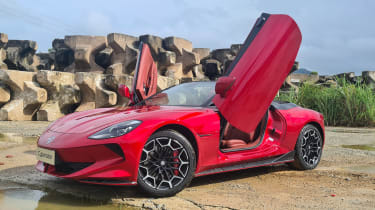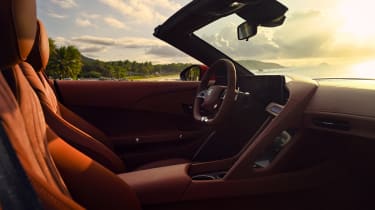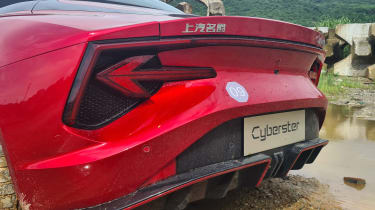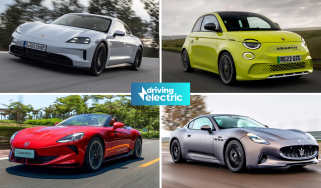MG Cyberster review
The MG Cyberster is a fantastic halo model for the brand, with stunning looks and performance
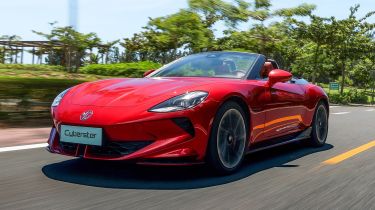
After more than a decade out of the game, MG is finally back in the sports car business with its brand-new Cyberster. The last roadster to wear the octagonal badge was the MG TF which made its debut way back in early noughties, so the pressure is on the brand’s new owners at SAIC to successfully resurrect this British icon’s sports car reputation in the modern, fully-electric era.
MG has already proven its ability to build appealing electric cars with the ZS EV, MG4 and MG5 all pretty solid sellers. However, these are low priced, family-friendly models, something that the Cyberster definitely isn’t. Starting from around £55,000, this electric sports car really needs to be something special if it’s to succeed.
From a visual perspective, the MG Cyberster is off to a good start as it really doesn’t have any trouble standing out, thanks to its swooping lines and showy scissor doors. The interior is a real step up from anything we’ve ever seen from the brand, too, as the driver-focussed cabin is adorned with plush materials that give this sports car a surprisingly luxurious feel.
There isn’t much in the way of a crowd for the Cyberster to stand out from, either, as the electric sports car market is still a sparsely populated one. Performance models like the Hyundai Ioniq 5 N, Tesla Model 3 Performance and Porsche Taycan could tempt buyers away, but none of them offer the same traditional sports car shape as the MG, nor a folding roof
There are, of course, a number of combustion-powered sports cars that will still contend with the Cyberster, but unlike with MGs of the not-too-distant past, the Mazda MX-5 is no longer the brand’s arch nemesis. Instead, with its £55k price tag, up to 503bhp on tap and a 0-62mph time of as low as 3.0 seconds, the MG Cyberster is taking aim at the likes of the Porsche 718 Cayman and Alpine A110.
In order to help the MG keep up with these highly capable competitors, the Cyberster is available with a choice of two trim levels, each with its own powertrain setup. The first is the entry-level Trophy model, and this is powered by a single rear-mounted motor producing 335bhp. This version claims an official 0-62mph time of 5 seconds and a top speed of 121mph. Standard kit includes 19-inch alloy wheels, a 10.25-inch touchscreen infotainment system with Apple CarPlay and Android Auto and an eight-speaker Bose sound system.
Those wanting more serious performance will be tempted by four-wheel drive GT model. This is powered by a dual-motor setup which pumps out 503bhp and will complete the landmark 0-62mph sprint in a mere 3.2 seconds. The Cyberster GT’s top speed also increases slightly to 125mph, and some sportier features are added, too, including launch control and larger 20-inch alloy wheels.
Of course, driving fast will quickly take its toll on the MG Cyberster’s battery range; this comes courtesy of a 77kWh battery, of which its low positioning helps keep the Cyberster’s substantial weight in check. The less-powerful Trophy variant claims up to 316 miles of range on the WLTP combined cycle, but this drops to 276 miles in the faster GT.
As you’d expect, the performance from the electric motor is palpable, but classic MG owners are probably wondering whether the Cyberster, despite its electric powertrain and 1,900kg kerb weight, is able to come close to the fun and engagement offered by the brand’s legacy models. Our recent passenger ride on UK roads managed to drum up our excitement, so what’s the verdict?
Well, we’re pleased to report that, thanks to assistance from F1 engineering guru Marco Fainello, MG has managed to work wonders with the Cyberster’s chassis; the front end feels incredibly darty yet never a handful, making the Cyberster approachable for even the most inexperienced of sports car drivers. The ride is surprisingly compliant for an electric car of this nature too, with the Cyberster’s refined manner making it an ideal candidate to take for a weekend away.
Involving drive aside, the MG Cyberster manages to win on looks alone. Particular highlights include the headlights which are reminiscent of the MGF roaster of the late nineties, as well as the long, sweeping bonnet which has more than a whiff of MGB GT about it.
Similar to those found on the MINI, Union Jack tail-lights may not be to everyone’s tastes, but the MG Cyberster nevertheless manages to look dramatic and futuristic, while also tugging at our heartstrings with some stunning heritage-inspired design cues.
This essence of theatre is perhaps no better represented by the Cyberster’s Lamborghini-style scissor doors, which are almost as subtle as something you’d find in Elton John’s wardrobe.
Step inside and it’s hard to fathom that the Cyberster is from the same brand as the rest of the MG line-up; cheap plastics have been swapped with plush leatherette and suede trim, although the Tesla-style ‘yoke’ wheel of the concept car has now been traded for a more conventional (yet no less sporty-feeling) round wheel.
Still jet-fighter-esque is the Cyberster’s seating position which, while slightly higher than usual for a petrol sports car, is comparatively low when it comes to EVs. The trio of screens that encircle the driver can be a little difficult to see from behind the steering wheel – it’s almost as if MG designed the car with the aforementioned yoke in mind – but the processor that powers them is more than enough for the job, offering snappy smartphone-like performance.
Overall, the Cyberster has managed to meet our admittedly high expectations. MG has succeeded in recapturing the magic of its old models and recasting it with a fresh and modern formula. We’ve only driven briefly so far, and we’re looking forward to trying the MG Cyberster back here in Britain. If we’re honest, that opportunity can’t come soon enough.

